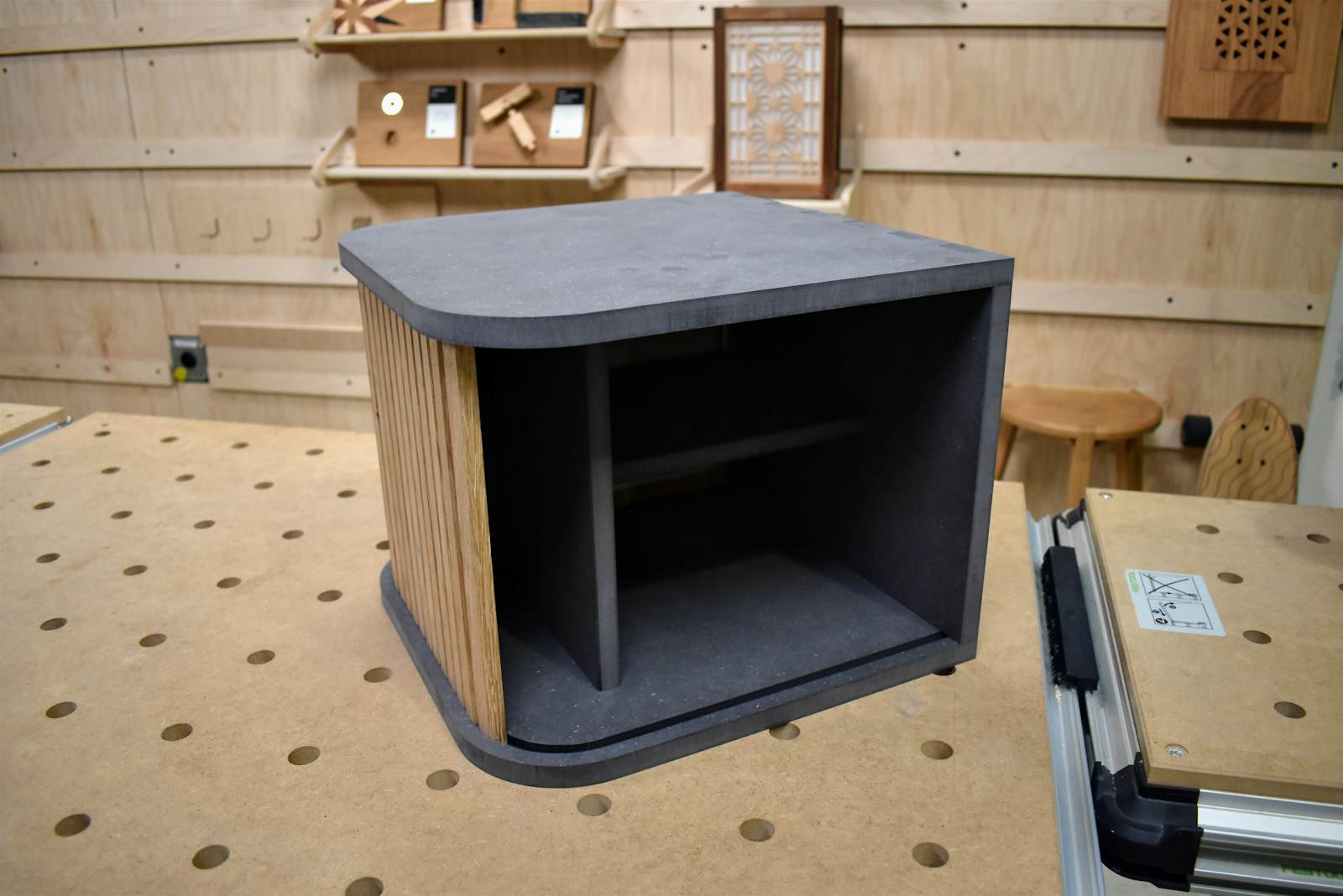Tambour Bedside Table


A small bedside table with a white oak tambour door and a sheet stock case. As Seen on Sessions.
131
Furniture
Files Included (5)
Tambour_Back.svg
603 BTambour_Bottom.svg
1 kBTambour_Center.svg
588 BTambour_Shelf.svg
486 BTambour_Top.svg
950 B
Materials
Case: (1) 48"x24"x0.625" sheet
Tambour: (30) 10.5"x0.750"x0.400" strips
Canvas
Hide glue
Shaper tape
Double-sided tape
Scrap material for tambour glue jig
Tools
-Shaper Origin
-Workstation
-1/4" Cutter
-Table Saw
Instructions
Tambour: The tambour slats for this project are cut from 0.400" white oak. I chose to resaw and plane down a thicker board, but you can also start at thickness and simply cut the slats on your table saw. This project uses 10.5"x0.750"x0.400" strips with each end rabbeted down to 0.300". I also added a chamfer to the long edges to make each slat visually distinct. All of the blind dados for the shelves are cut to a depth of 0.25". The mating edges are then hit with an 1/8" round over bit in a trim router so they fit in (instead of chiseling corners). The bottom track is cut to a depth of 0.25", while the top track is cut to a depth of 0.3" to avoid any chance of interference. Make sure you apply finish before gluing up your door. I assembled my door using canvas, wood glue, and a custom fixture, but there are a lot of different ways to do it. Check out the Session for more options and tips! Case: All the parts for this case were cut from one 48"x24"x0.625" sheet of black MDF. The flat cuts are included in the attached SVG, and the box joints were designed on Origin. The case should be finished before the tambour is installed, and wax the track for an extra smooth slide. I'll attach the corresponding Sessions video once it's aired - check it out for more tambour tips!



